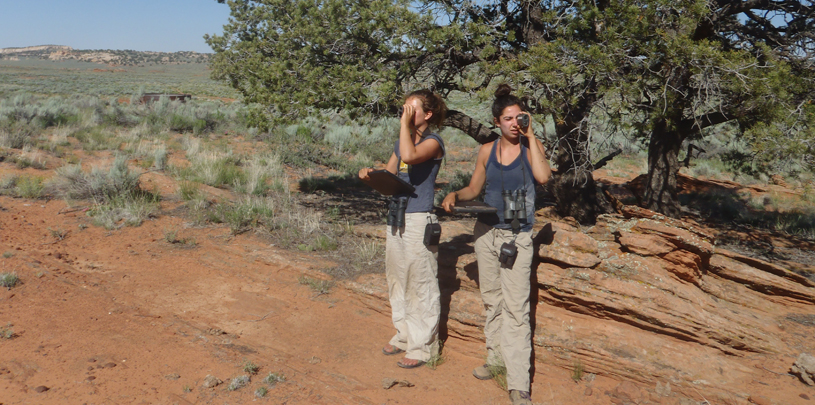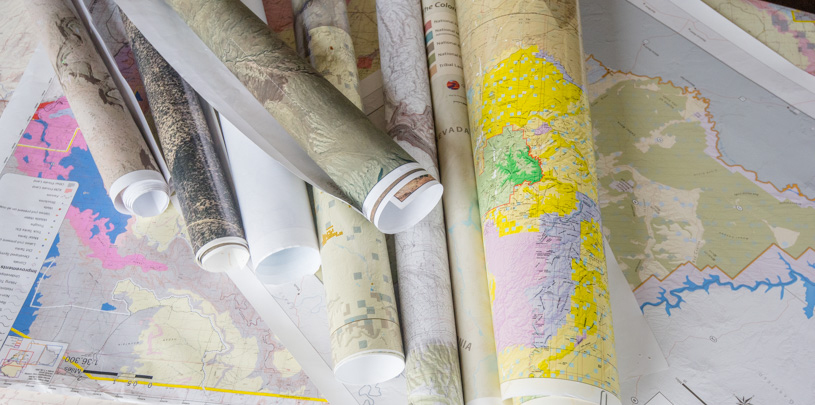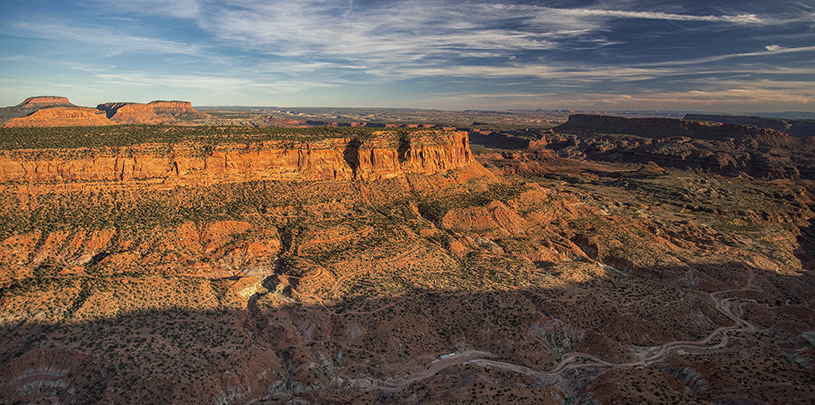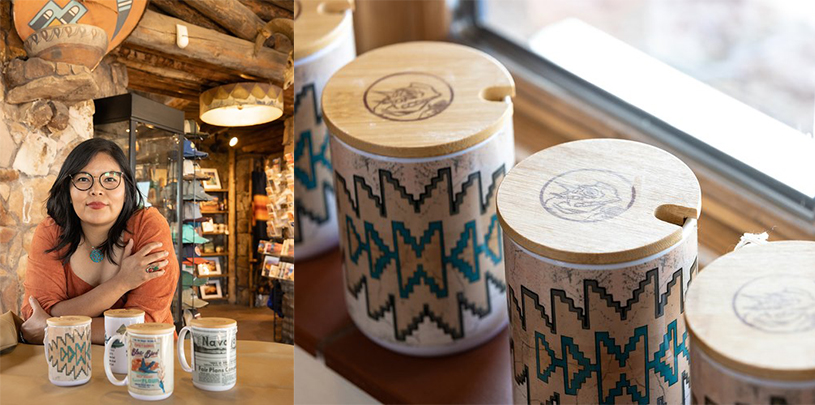
Guest post by Ysa Diaz, a contracted Field Biologist who spent four weeks on the Paria Plateau this summer identifying birds for the Vermilion Cliffs National Monument Songbird Survey.
Under the uncompromising mid-day sun, I waited at the bus stop in Santurce, Puerto Rico for the bus to take me to a meltingly hot kitchen filled with grease and misogyny. Although not perfect, the job was a job – at least that’s what everyone kept telling me was all I could expect as a recent college graduate. My eyes scanned the street for a bus silhouette as I dug out my phone from my back pocket and searched for Claire Martini’s number. The voicemail she left me the night before was a mystery delivered in an energized whirl.
“I have a question I need to ask you that I think you’ll be excited about,” she had said.
The phone ring repeatedly droned in my ear, and my mind raced with hypotheticals.
“Hello?” I asked.
The city smelled of car exhaust, fried food, and road-kill.
“Would you be interested in working for the Trust on the Paria Plateau again?” Claire asked.
Cement buildings stood upon cement streets, but all I saw was rust red sand. All I smelled was the sweet scent of a piñon-juniper forest. I was going home.
Homing
I first came to the Paria Plateau, which straddles the Arizona–Utah state line, to collect data for the Trust’s Vermilion Cliffs National Monument Songbird Survey in 2013. Hired as ornithology interns, my fellow classmate Marijke Wijnen and I spent two months on the plateau identifying birds, primarily by song, to learn which species inhabit the area.
Our mentor, Matt Williamson, teased that our job was actually a psychological game – a la Survivor or Fear Factor. And at times, we empathized with his perspective. The job entailed hiking miles of uneven terrain between research sites, under fierce desert sun, with only one companion to help navigate the potential risks of rattlesnakes, fire ants, bees, and worst of all – getting a 5.7-liter-engine Dodge Ram truck stuck in the sand.
Depending on the description, our isolated field biology job could sound like a nightmare or a dream. But misadventures aside, the act of listening, observing, and responding to the landscape created an intimate relationship and sense of place I’ve only experienced on the plateau.
Having accepted Claire’s invitation to return to the Paria again this May, Marijke and I set out to collect our second and final set of songbird data. The rhythm of life on the plateau resumed without skipping a beat, and it felt as though we had never truly left.
Bird songs
Speed walking to site 11, sweat slid down my back from the mid-morning heat, and the distinct smell of sand, sage, and sweat filled my head. Here, the birds treated us to a full ensemble of songs, the Paria’s version of a Summer Jam Mash-Up. The familiar, steady melody of the Black-throated Sparrow provided the heart of the track, while the whine of the Mountain Bluebird harmonized with the guttural caws of the Common Ravens flying over-head. A red-capped Chipping Sparrow’s trill was the original trap-beat. And the ribbets of the Gray Flycatcher rounded out the production to create a beat that would inspire even Kanye West. These songs were the laughter of the Paria, and although they consisted of slightly different trills each day, they revealed the desert’s true essence.
This summer, as often occurs when reuniting with a friend after some time, I noticed changes in the Paria’s landscape. With the uncharacteristic rains in Arizona this late spring into early summer, the plateau was bursting with wildflowers Marijke and I had never seen before – new species acting as new wrinkles hugging the eyes of the Paria. There were white Primroses, violet Hydrophyllaceae, fragrant Lamiaceae, orange Globemallow, and a wide array of yellow Asteraceae. These lines intertwined with the familiar plants that dotted the sand in 2013 – deep blue Spider Lilies, magenta Prickly Pear buds, and the blood red of the Hedgehog Cacti. The Paria’s willingness to share new features of its personality illustrated the space in the human-nature relationship to trade stories of change. The Paria’s from the growth of new species, mine from the development of new questions.
Breathing Space
The anticipation of reaching the one-year mark since finishing my undergraduate degree at Whitman College started a negative feedback loop in my mind. For months before arriving at the Paria, I was consumed with the question of, “How, exactly, do I bring meaning to my everyday life?”
This summer, I asked the Paria for counsel. In reply, the landscape enveloped me in sandstone, embraced me with wind, and showed me the hauntingly beautiful red band of light that declares sunrise is fast approaching. The Paria took on the role as my mentor to true observation, as both a scientist and a human being searching for something more.
The expansive horizon showed me that this search is not on a fast-paced timeline. Rather, it’s one of patience – one that evolves from wind, water, sun and time. And while I welcome these factors of slow evolution into my reality, the Paria encouraged me to truly look around me and observe. The plateau’s embrace gently reminded me to breathe in the silence. Breathe in the space. Breathe in the distance from question to answer.
Paria in my Pocket
I am back in Puerto Rico now, perched on a wood-woven bench in La Casa Cultural. The smell of arroz con pollo billows from the food trays off to my left and a group of early adolescents plays cards in front of me. A misfit of the group plays the refrain of “Let it Be” on the piano while construction roars outside. And yet, through these urban sounds, I can still make out distant notes and trills of the birds from the island. Their calls are new, and they may not consist of any of the featured artists from Site 11’s Summer Jam Mash-Up, but they remind me of the place I left behind.
This community center in a densely populated Puerto Rican city has a long list of differences from the solitude I found in the dry desert of northern Arizona. But from my work as a field biologist, I have learned to observe my landscape in a way that allows meaning to precipitate out of it. I may not be standing on a sandstone spire looking out onto a piñon-juniper forest, but the Paria is with me here, reminding me to search for significance in the smallest details and stay present.




